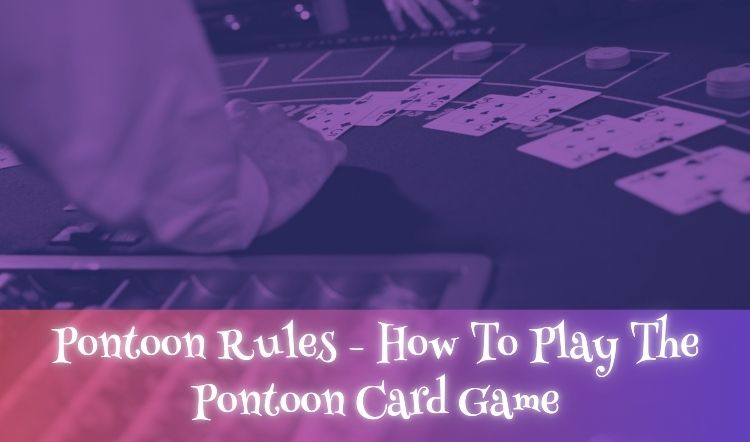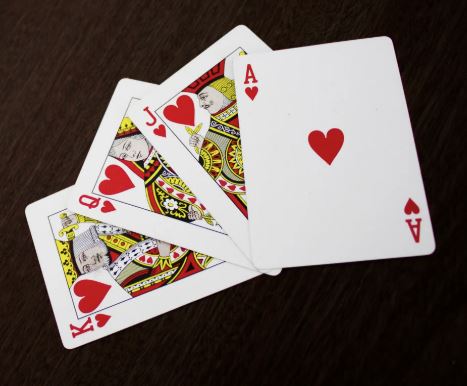
Pontoon is a British variant of the popular American card game blackjack, also known as 21. While the two games share many similarities, Pontoon features a few distinct rule variations that set it apart. In this article, we’ll explain how Pontoon is played, break down its rules in detail, and highlight the key differences and similarities between Pontoon and blackjack.
Read on to learn how the game works and what sets it apart.
What Is a Pontoon?
Pontoon is a widely enjoyed card game, especially popular in the UK, and often played in various forms around the world. It’s sometimes referred to as Twenty-One or Spanish 21, and occasionally—though not entirely accurately—as blackjack.
While Pontoon shares many similarities with blackjack, including its objective and gameplay style, it’s technically a distinct game with its own set of rules. Both games revolve around the same goal: building a hand with a total value as close to 21 as possible without going over.
Pontoon is played with a standard 52-card deck and involves a dealer, whom players must try to beat by achieving a stronger hand.
How To Play The Pontoon Card Game
Pontoon is usually played with 3 to 8 players. As mentioned previously, the objective is to get a hand as close to 21 as possible without going over—and to beat the banker, or dealer. A hand that exceeds 21 is called a bust and results in an automatic loss.
To start, one player is chosen as the banker, often by drawing the highest card from a shuffled deck. The banker then deals one card face down to each player, including themselves. A player may peek at their own card before placing bets, but the banker cannot.
Next, each player receives a second card, while the banker’s second card is dealt face up. Starting with the player to the banker’s left, players take turns deciding whether to “twist” (take another card) or stick with their current hand. Twisting doesn’t change the original bet.
Once all players have taken their turns, the banker reveals their face-down card and plays their hand. The banker compares their hand to each player who hasn’t busted.
If the banker wins, they collect all wagers and keep the role for the next round. If a player wins, they earn a payout and become the new banker.
Pontoon Rules
Pontoon might seem a bit complex at first, but it’s actually quite straightforward once you understand the basics. If you’re interested in playing Pontoon, we’ve outlined some of the core rules that guide how the game is played here: 
-
Card values: Knowing the value of each card is key. All face cards (jack, queen, and king) are worth 10 points. Aces can be worth either 1 or 11 points, depending on what benefits the hand. All other cards are worth their face value—so a 7, for example, is worth 7 points.
-
Pontoon: The best hand in the game is called a "Pontoon"—a two-card total of 21 made up of an ace and a 10-point card (10, jack, queen, or king).
-
5-Card Trick: The next strongest hand is a "5-Card Trick," which is any combination of five cards that totals 21 or less. It beats all hands except a Pontoon.
-
Three or four-card 21: A hand totalling 21 with three or four cards is ranked below a Pontoon and a 5-Card Trick, but still beats other totals under 21.
-
Bust: If a hand goes over 21, it’s a bust, and the player automatically loses that round.
-
Twist or stick: On a player’s turn, they can choose to "twist" (take another card) or "stick" (keep their current hand and end their turn).
-
Double down: Players have the option to double their original bet in exchange for just one additional card. After that, their turn ends.
-
Split: If a player is dealt two cards of the same value, they can choose to split them into two separate hands. This requires an additional bet equal to their original one.
-
Tie rule: If a player’s hand has the same value as the banker’s, the banker automatically wins the round.
Is Pontoon The Same As Blackjack?
While Pontoon and blackjack share some surface-level similarities, they are distinct card games with notable differences in rules and gameplay. Both games revolve around the goal of achieving a hand value as close to 21 as possible without exceeding it. However, their structure and mechanics diverge in several key ways.
In blackjack, each player and the dealer are dealt two cards at the start of the round, and players compete directly against the dealer. In contrast, Pontoon typically begins with players receiving just one card before placing their bets.
Another major difference lies in the role of the banker: in blackjack, the dealer represents the house, whereas in Pontoon, the role of the banker rotates among players based on who wins each round. This means players compete against each other rather than against a static dealer.
Although Pontoon and blackjack share a common foundation, Pontoon introduces its own set of rules and dynamics, offering a unique variation that appeals to players looking for a different kind of challenge.
As with any form of gambling, it's important to approach both games with a clear understanding of the rules and to always practice responsible gambling.
*All values (Bet Levels, Maximum Wins, etc.) mentioned in relation to this game are subject to change at any time.
**The information provided in this blog is intended for educational purposes and should not be construed as betting advice or a guarantee of success. Always gamble responsibly.
